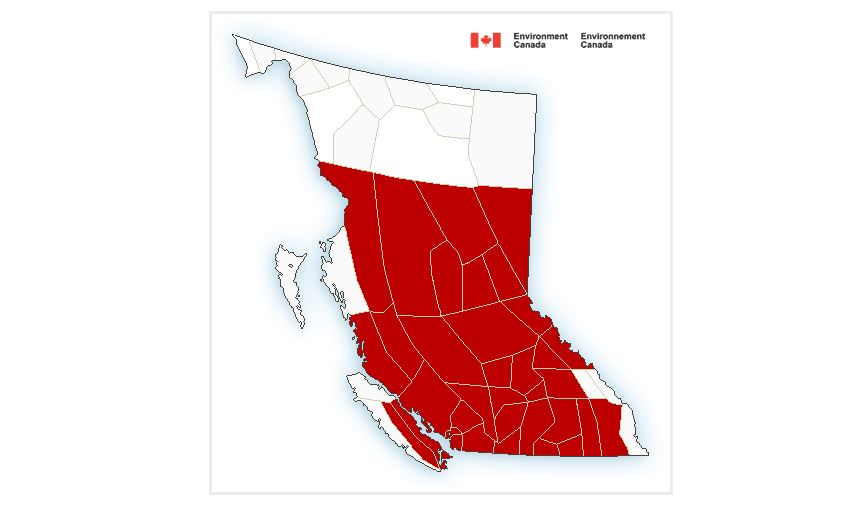More B.C. weather records were broken on Wednesday, with 10 places setting new daily highs amid this week’s continuing heat wave.

“A strong high-pressure that has been dominant for the past few days will hold through Sunday,” Global BC meteorologist Mark Madryga said.
“Afternoon high temperatures will continue to soar in most of B.C., with some in the Southern Interior likely to top 40 C over the next couple of afternoons.”
Heat warnings remain in effect for most of the province, including Greater Victoria, Metro Vancouver, Howe Sound and the Fraser Valley plus the Okanagan, South Thompson, Similkameen, Shuswap, and Boundary regions.
“Lower Mainland readings will consistently soar into the low 30’s away from the ocean over the next few days,” Madryga said.

Get breaking National news
“In addition, an air quality advisory is in effect for most of Metro Vancouver and the Fraser Valley, due to build-up of low-level ozone combined with the heat and mostly stagnant air.”
With scorching high heat, many longstanding B.C. heat records were broken on Wednesday:
- In the Vancouver area, a new record of 30.4 C was recorded, breaking the old record of 29.9 C set in 1998.
- In the Bella Bella area temperatures tied the record of 29.6 C set in 2009.
- In the Cache Creek area, a new record of 40.8 C was recorded, breaking the old record of 39.5 C set in 1998.
- In the Clinton area, a new record of 34.1 C was recorded, breaking the old record of 32.9 C set in 2009.
- In the Dawson Creek area, a new record of 32.2 C was recorded, breaking the old record of 30.5 C set in 2009.
- In the Fort St. John area, a new record of 31.7 C was recorded, breaking the old record of 30 C set in 1935.
- In Lytton, a new record of 42 C was recorded, breaking the previous record of 40 C set in 1939.
- In the Mackenzie area, a new record of 33.3 C was recorded, breaking the old record of 32.5 set in 2009.
- In the Nelson area, a new record of 38 C was recorded, breaking the previous record of 37.8 C set in 1944.
- In the Puntzi Mountain area, a new record of 34.9 C was recorded, breaking the old record of 34.3 C set in 2009.
The risks posed by extreme heat are more significant for young children, pregnant women, older adults, people with chronic illnesses and people working or exercising outdoors.
Some of the effects of heat illness include swelling, rash, cramps, fainting, heat exhaustion, heat stroke and the worsening of some health conditions.
Last week, the province’s public safety minister, Mike Farnworth, said a new warning system is ready to go with new protocols on how to issue heat alerts.
The protocol lays out the daytime maximum and nighttime minimum temperatures that would trigger the heat bulletins.
If a region is expected to exceed those ranges for two consecutive days, it will trigger a heat alert, while if it is expected to last three or more days it will trigger a heat emergency, Farnworth said.
The public is also being urged to visit the province’s PreparedBC website for more resources on how to manage extreme heat.

— With files from Global Okanagan’s Kathy Michaels



Comments